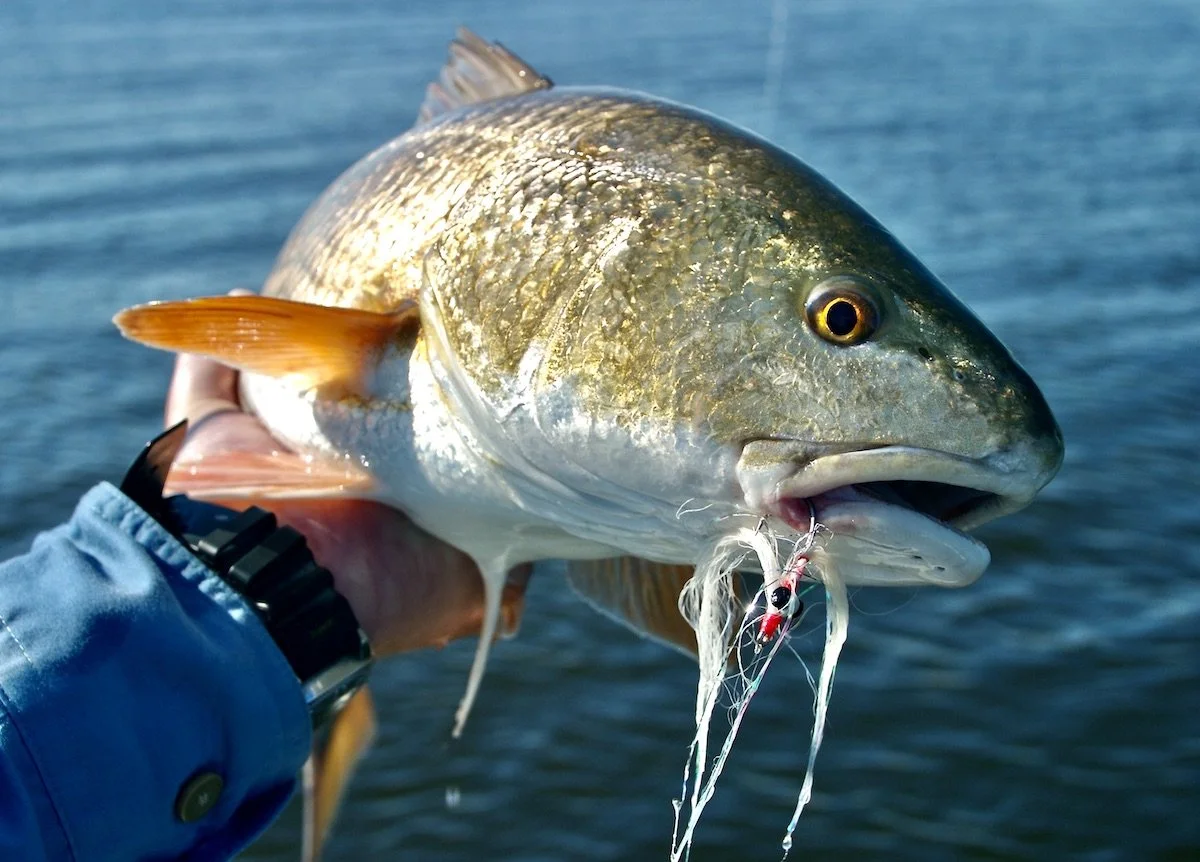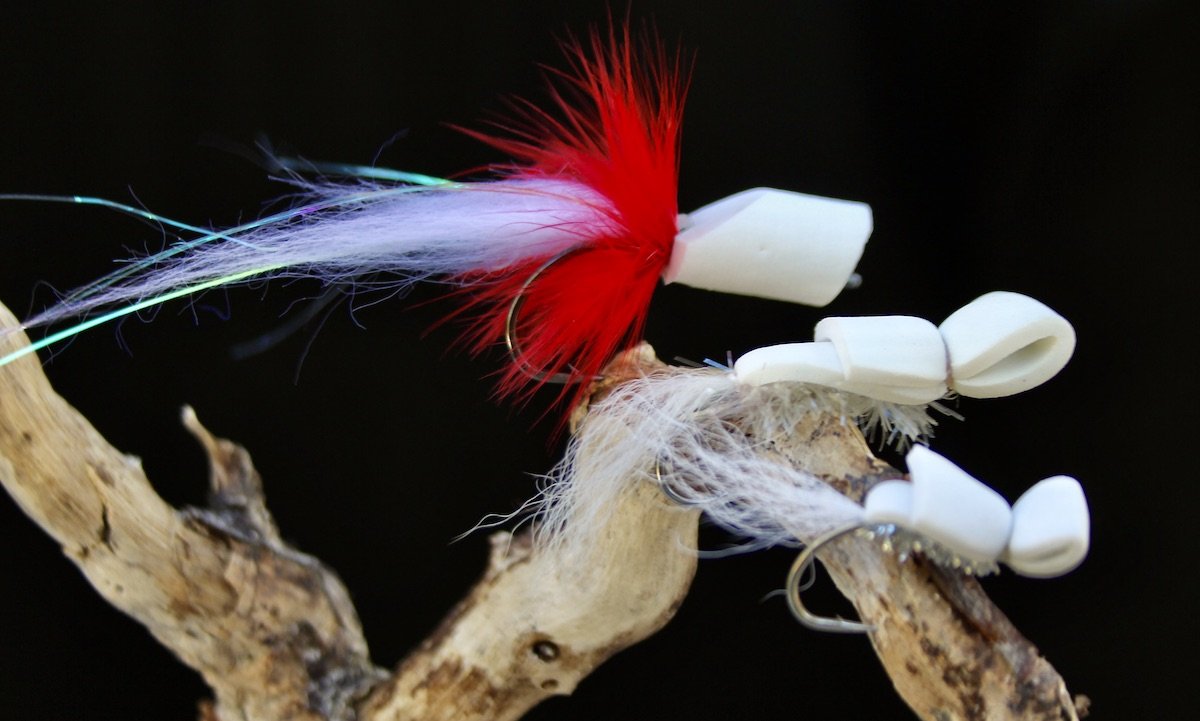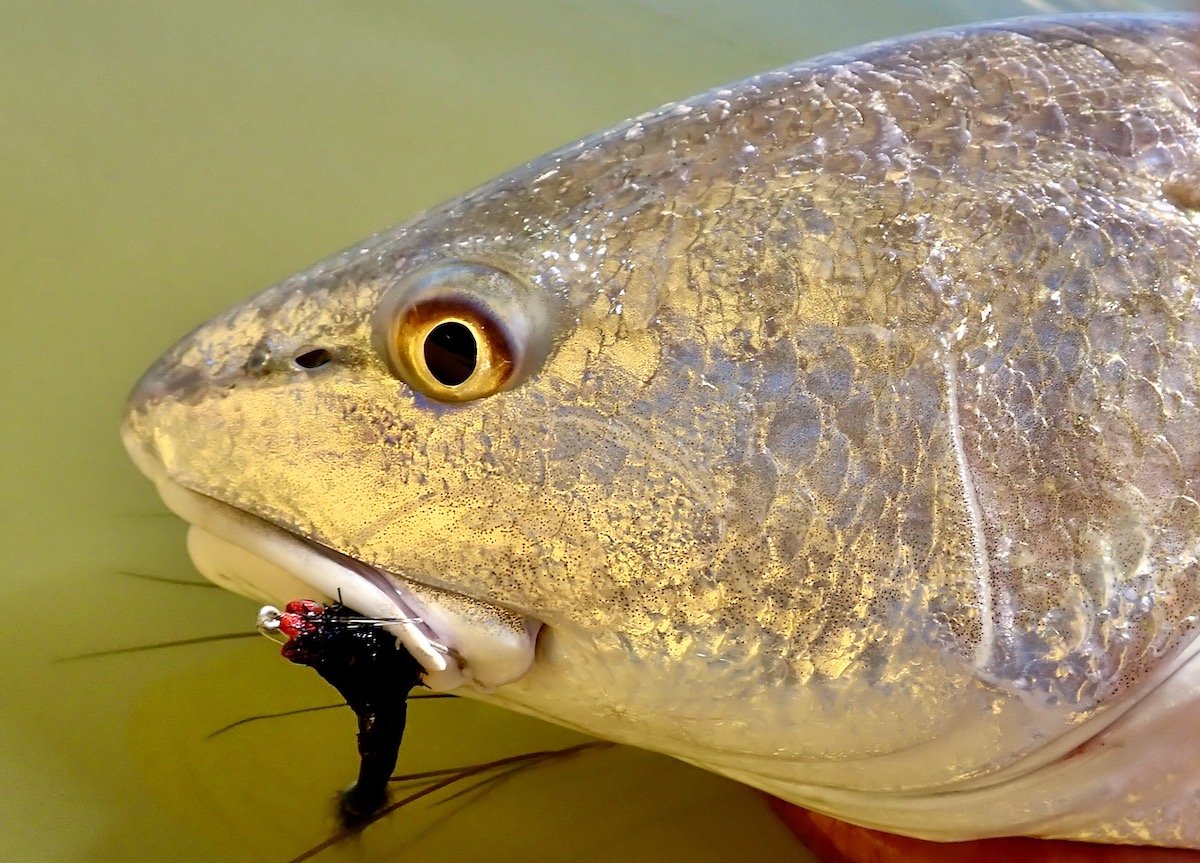Practical Redfish Fly Selection
By: John Kumiski
Most saltwater gamefish, redfish included, eat some combination of smaller fish, shrimp, and crabs. In my 40 years of fly fishing for redfish, 25 of them as a fly-fishing guide, my taste in flies has evolved. But not as much as you might think! I've fished with guides from the Mexican border up into the Carolinas, and I’ve interviewed many fly tyers and biologists. I've fileted way too many reds, but I examined the stomach of every one. I even wrote a book about fly fishing for redfish, called Redfish on the Fly. I have a bit of expertise!
Most of this redfish fishing has happened in water less than three feet deep. In some places the fish saw lots of fishermen. In other places, boats were rare sights. Regardless of where we were or who I was fishing with, common threads linked every fly box. Let's take a look.
A Popper and Gurgler are my favorite surface flies.
First of all, you need to carry flies that roughly imitate small fish, shrimp, and crabs. Those flies need to cover the water column, from the bottom to the surface. If you tie your own, the flies need to look good in the water; be easy to cast; not fall apart after a fish or two; resist hanging on weeds, oysters, and other underwater debris; and not spin as they fly through the air. I like them to be easy to tie, too, because the fish don't care much about the fly's aesthetics- as long as they look good in the water.
Fast Sinking Flies
These flies contain lead (or other dense metal), usually in the form of dumbbell eyes. They sink like they mean it. Ordinarily, the hook point will ride up to reduce fouling on the bottom. The classic example is the Clouser Minnow, a fly every fly fisher should carry regardless of what he fishes for.
A gaggle of Clouser Minnows, ready to go fishing.
What size should they be? That depends on where you're fishing. Happy fish that don't often see anglers respond well to a beefy fly, #2 or #1. Fish that see fishermen all day, every day, will spook off larger flies but might take a #4, or even a #6. This holds true regardless of the type of fly we're discussing.
Another classic redfish fly is the crab imitation. I like a Merkin style, tied with rug yarn. Kwans are good, too. The crabs I tie, usually on a #4 hook, are simpler than most. The fish don't mind.
Another weighted fly always in my redfish box is the Bunny Leech and its variations. These imitate nothing in particular, but look great in the water. Redfish (and black drum) eat them like candy.
These are my version of the Merkin crab, much easier to make than the original pattern.
"Tweener" Flies
Tweeners, a term I just made up, are flies that can be tied weighted or unweighted and work well either way. My version of the Slider is an example. The Seaducer is another. You can tie these flies with plastic eyes, bead chain eyes, lead eyes, or no eyes at all, depending on how fast you need them to sink or not.
Tim Borski invented the Slider. His are prettier, mine much easier to make.
These two flies are the ones I use to loosely imitate shrimp. There are lots of shrimp imitations. Use the one you like best.
Unweighted Flies
For me, these are all streamers, minnow imitations. PolarFibre Minnows, Puglisi-style streamers, and Electric Sushi flies are some examples of this type of streamer. If you want to have a few jumbo-size flies (and you should), this is the place to do it. Tied with water-shedding synthetics, this type of fly is easy to cast, even in bigger sizes.
Bend-backs, either the standard type or the Bouncer style, are another type of streamer always found in my redfish box. When the fish are realspooky, and that little "plop" of a weighted fly hitting the water spooks them, these flies are a go-to that often do the trick.
A morning's worth of tying Steve Duckett's Bouncer-style bendbacks.
Floating Flies
These are the flies I use the least for reds. My waters are pounded every day, and the fish don't eat them very well. In lightly fished places, they can be awesome fun! And, redfish seldom exist in a vacuum. All those fish with mouths that point up- snook, seatrout, tarpon, jacks, ladyfish- will all eagerly take surface flies.
The surface flies I carry are Gurglers and poppers. Gurglers are easier to make and cast, poppers make more noise. There are many more choices. Again, use what you like best.
Deep in Everglades National Park I took this red on a Gurgler.
Attractor Flies
Most fly fishers want to sight-fish for reds. Sometimes, you just can't,if the water is deep, or dirty, or wavy, or it is overcast. When you have to fish blindly, attractors are your friends. The two in my box are Rattle Rousers and Spoonflies.
The Rattle Rouser is a bucktail-winged streamer tied with a woven Mylar tube under the hook. In that tube is a small rattle. Before the wing is tied in, the tube is coated with fast-curing epoxy. I dislike using epoxy, so seldom make (or use) these flies. But I always have two or three!
During one of my charters, we spotted a redfish, and my fisherman made a cast. He missed by at least ten feet. But when his Rattle Rouser hit the water, that fish heard it and tracked it down. He caught that fish, which weighed close to ten pounds. Good stuff!
Spoonflies are epoxy spoons you can cast with a fly rod. I don't make these, and seldom use them. They are the fly fisher's version of the Johnson Minnow, and can be absolutely deadly. I always carry two or three.
What Colors?
If you ask ten guides about fly colors for reds, you'll get at least a dozen different, conflicting answers. You care more about fly color than the fish do! Usually, anyway.
This red took a black bunny leech
The following list shows the flies I carry, with the sizes and colors. Modify as needed!
Clouser Minnows, #4, white, chartreuse/white, tan/white, olive/white, purple, black, black/green, black/purple
Merkin crabs, #4, brown, brown/tan, tan, tan/olive
Bunny Leeches, #2, black
Seaducers, #2, #4, natural grizzly hackle only
Sliders, #4, white, olive, tan, brown, black/grizzly
Synthetic Minnows #4 - #3/0 in all kinds of color combos, including black/purple, olive/white, chartreuse/hot pink
Bendbacks #4, chartreuse/hot pink, black/rootbeer, olive/white, tan/white
Gurglers, #2, white
Poppers, #2, white
Rattle Rouser, #2, chartreuse/white
Spoonfly, #2, gold
Final Thoughts
After examining so many redfish stomachs, I can safely state that about 40 percent of the time they're empty. Sometimes the fish just aren't eating. Be prepared for rejection.
If you make a good presentation or two and don't get bite, change the fly to something smaller and/or darker. The things I find in redfish stomachs tend to be small- small pinfish, small shrimp (and inch or so long, very common), small crabs, mud minnows, and mosquitofish. Yes, I have seen redfish working together to tear apart a large horseshoe crab- once. Most of what redfish eat is small. Don't be afraid to go there.
What fly do you start the day with? Depends on where you are, how deep it is, what fish you see, and what the fish are doing. Human nature being what it is, you'll probably tie on what you caught your last fish on. It's as good a choice as any! You can always change flies if your first choice comes up short.
Hopefully you understand that what you choose to stock your box with will be different than what I stock my box with. That's OK! You'll catch more fish using what you're comfortable with. So, stop reading this, get your tackle, and go fishing. You won't catch any fish while you're on your computer, that's for sure.
Have you done something interesting outdoors? Join Global Outdoors and write a review to tell everyone about it! We’re building the home for trusted reviews of outdoor experiences, outfitters, and guides.









